Invasive forest pathogens are usually the result of a fungal infection and are a problem for all types of forests: urban, commercial, and natural. Pathogens can dramatically decrease the population of a single species within forests which can severely impact forest functions. Urban forests increase property values, reduce energy costs for nearby homes, improve air and water quality, and provide aesthetic value. Natural forests provide environmental services and hold intrinsic social values for Canadians.
The commercial forest is a pivotal economic need for Canada. It provides a significant portion of our gross domestic product and a large number of jobs. The detrimental impacts on trees by invasive pathogens do not stop with the trees – they affect every aspect of the ecosystem including the wildlife that relies on that ecosystem.

Oak Wilt
Oak wilt is a vascular disease caused by a fungal infection. The fungus produces mats under the bark that result in discolouration of the sap wood.

Butternut Canker
Butternut canker is caused when a specific fungus gets under the bark and causes cankers to form on the trunk. The cankers form as large black spots and the infection can spread via spores all around tree.
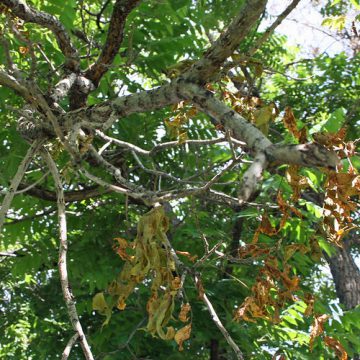
Thousand Canker Disease
Thousand cankers disease is the outcome of an insect-fungus complex which results when the walnut twig beetle carries spores of an invasive fungus into eastern black walnut trees as it feeds on its bark
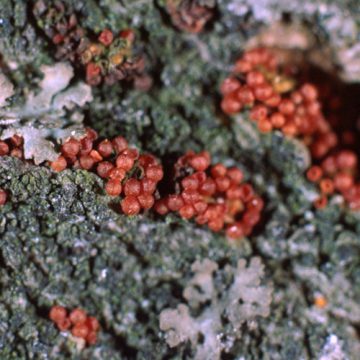
Beech Bark Disease
Beech bark disease is caused by an insect-fungus combination. The beech scale insect is yellow and up to 1 mm long, covering itself in white woolly wax that gives the appearance of a wool coating on the tree.
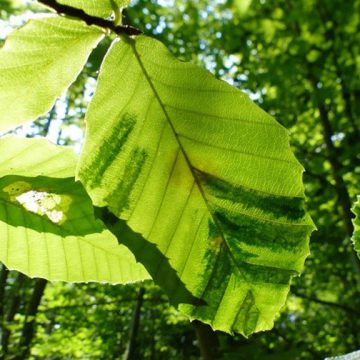
Beech Leaf Disease
Beech leaf disease (BLD) was first discovered in North America in 2012 in Ohio. BLD has spread quickly since its arrival and is now found in several United States and Ontario.

Dutch Elm Disease
Dutch elm disease (DED) refers to two closely related invasive pathogenic fungi of the Ophiostoma genus, Ophiostoma ulmi and Ophiostoma novo-ulmi which emerged in the Netherlands shortly after the first world war (Hubbes, 1999).
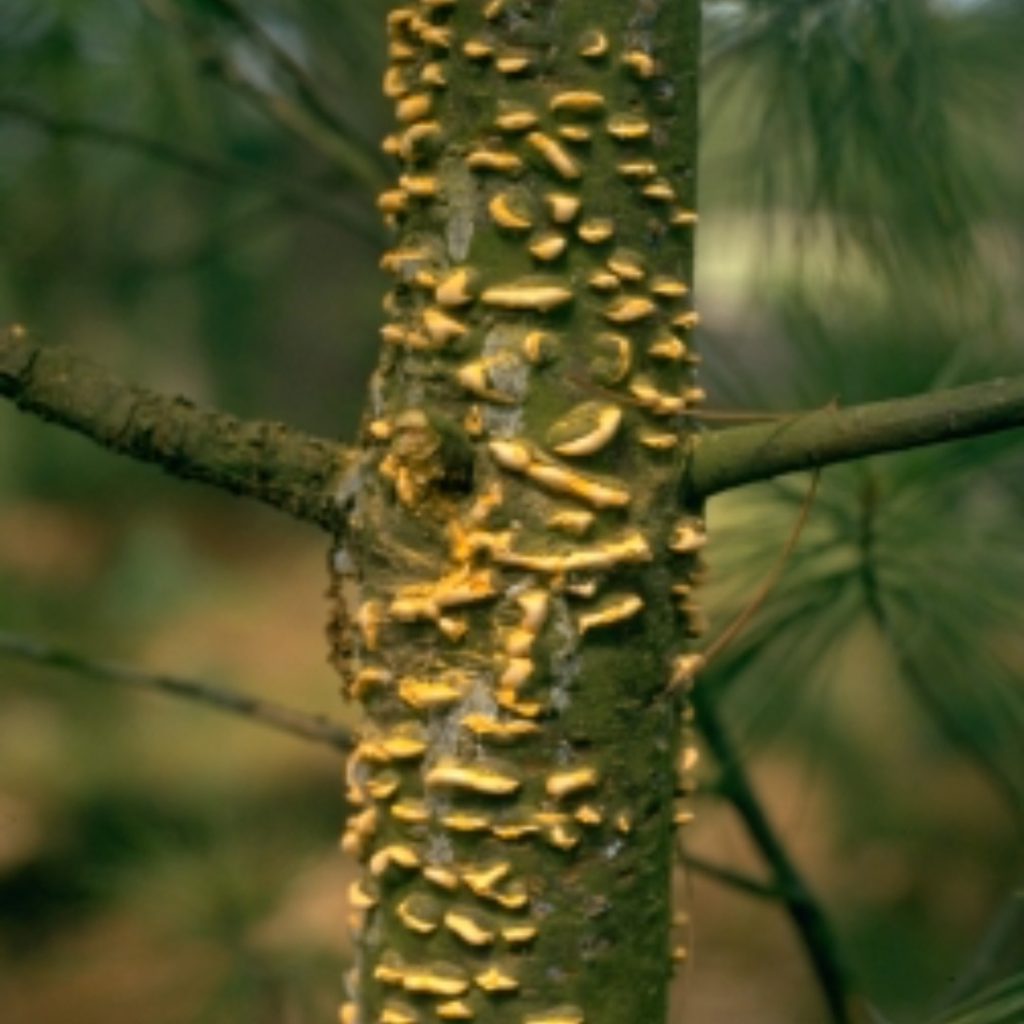
White pine blister rust (WPBR) is a disease caused by an invasive rust fungus that threatens white pine in Canada. Cronartium ribicola, the rust pathogen, is native to Asia but was introduced to Canada in the early 1900s.
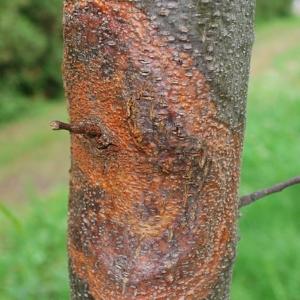
Chestnut blight is an invasive fungal pathogen that devasted American Chestnut in Canada and the United States. It was first documented in 1904 when a forester noticed dying chestnut trees in the Bronx Zoo in New York City.
